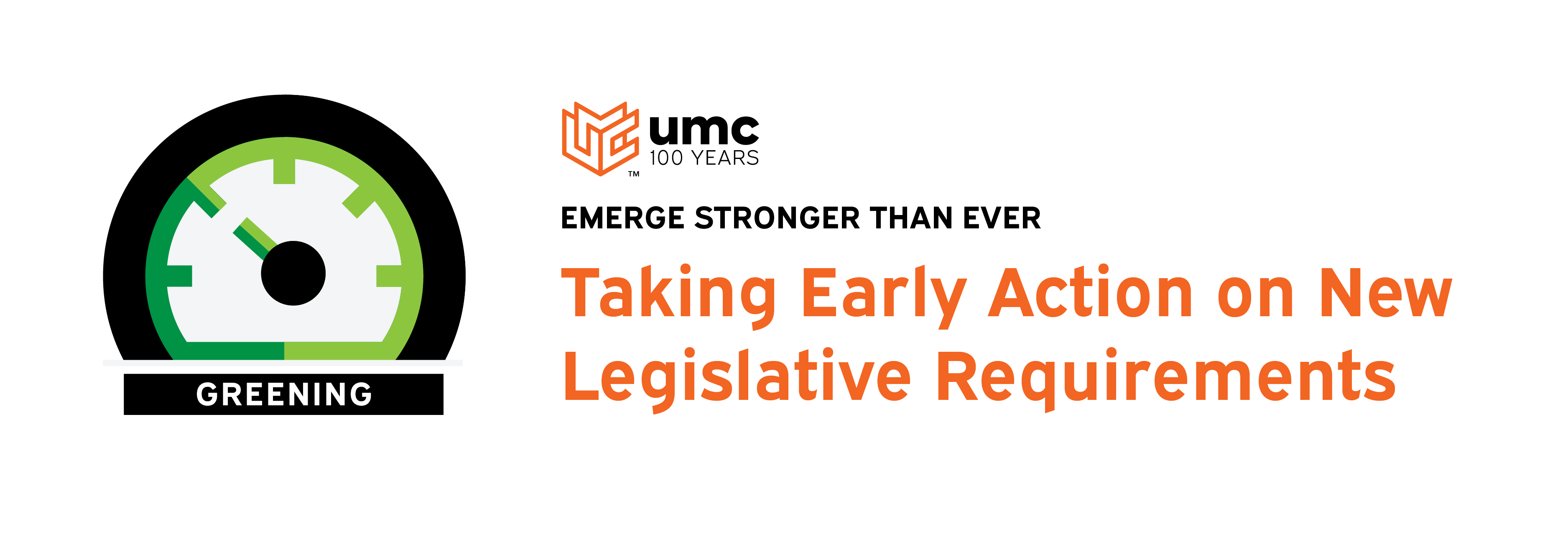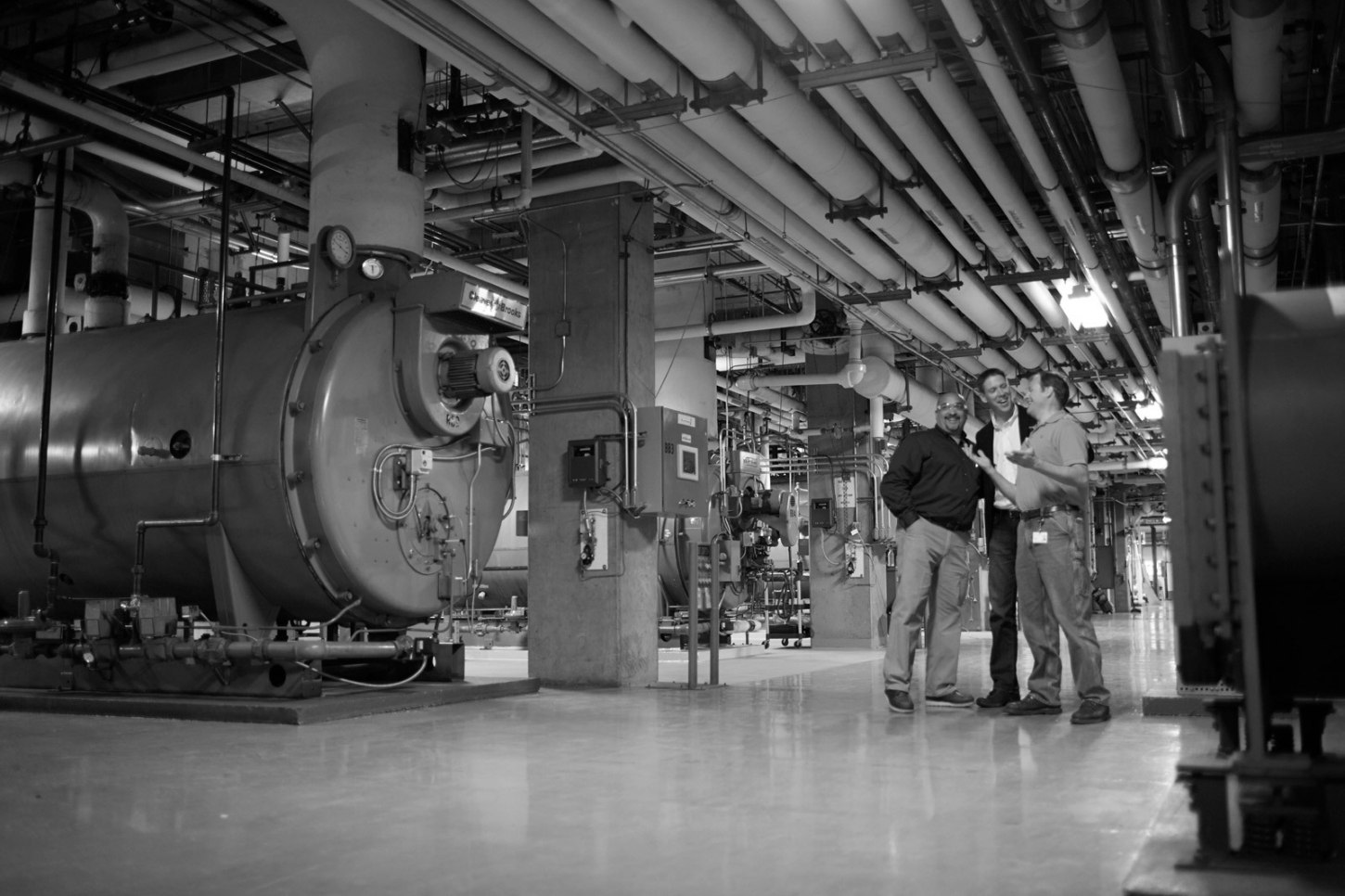
Knowledge is a valuable resource for any organization. UMC offers technical knowledge of the new Clean Buildings Standard and technical know-how to help your building meet compliance.
What is the Clean Buildings Standard?
Existing non-residential buildings are among Washington State’s primary consumers of energy, and together, produce over a quarter of our state’s total carbon pollution. That is why in 2019, the legislature passed the Clean Buildings Standard. Now, after 18 months of thorough stakeholder engagement, the Department of Commerce has finalized the rules for implementing the law. The Clean Buildings Standard provides both incentives to encourage early adoption as well as penalties for non-compliance with its building performance standards.
Start now: most buildings will need several years of dedicated improvements to comply with the law on schedule. Compliance will be determined based on a building’s Energy Use Intensity (EUI) for its building type – such as hospital or office – compared to its EUIt, or “target” for that building type. EUI is a measurement of energy consumed per square foot; both EUI and EUIt are industry-accepted measures of building performance in our region and provide a good benchmark of your building’s overall efficiency.
When and how will the Clean Buildings Standard take effect?
The Clean Buildings Standard will take effect beginning June 1st, 2026, for buildings larger than 220,000 square feet. In 2027, the threshold decreases to 90,000 square feet, and by 2028, the enforceable size decreases to 50,000 square feet.
While these timeframes may seem far away, there is significant work to meet compliance and potentially receive incentive funds for moving quickly to meet these requirements. Building managers should start now by benchmarking your facility’s EUI against the building’s statutory EUI target (EUIt). From there, there may be low-cost or no-cost options to help your facility meet compliance or your building may require more substantial infrastructure projects: either way, you benefit by benchmarking your energy use early, plus this puts you in a position to apply for early adopter incentives.
Take advantage of available incentives and avoid penalties.
The Clean Buildings Standard offers Early Adoption Incentive funds. If you choose to get ahead of your compliance period, begin compiling your application now so you’re ready when the funding program opens in July of 2021. The limited pool of $75 million dollars will be allocated to early adopters on a first-come, first-served basis. Incentives for individual buildings could be as high as $0.85 per square foot and are additional to other energy efficiency incentives through utilities and any grants your building may also be eligible to receive. For a 220,000 square foot building, you could pocket $187,000 just for acting quickly to improve your building’s overall efficiency!
Begin now to reserve your share: build a plan for applying so your building will be ready with a strong application for these incentive dollars by July 2021. Building owners who choose to waive early-adoption opportunities will face deadlines to meet compliance later. Those who choose not to comply at all will face a substantial annual penalty of up to $5,000 + $1 per square foot.

Energy Services Performance Contracting for both public and private buildings
Washington State administers an Energy Savings Performance Contract (ESPC) program for public entities. If it appears that your public facility may need substantial infrastructure retrofits to meet compliance with your energy target, the ESPC program may be the most streamlined way for you to manage all of the various incentives, design development, and construction management for future infrastructure projects. Not only does this program save you resources by essentially providing an extension of staff, but it also allows you to work with regionally recognized firms like UMC – actively involved in the new legislation – to deliver guaranteed energy savings and equipment performance, all at a guaranteed cost for your public facility.
And while the state’s ESPC process primarily supports public facilities, the model is cost-effective for private buildings as well.
Simplify the business case. Benchmark your energy use with UMC.
So, do you know your building’s benchmark energy use intensity score or target? UMC is a local, 100-year-old design-build mechanical contractor and energy services company. The company is the premier provider of Seattle building tune-ups – the successful program that inspired this new statewide Clean Buildings Standard.
Add value to your building, cut energy bills, take the lead on green jobs in our region, avoid penalties, and earn incentives via the Clean Buildings Standard's early adoption program. UMC is ready and able to help you prove your leadership!
Authors
Bonnie Frye Hemphill is Director of Policy & Partnerships at UMC. She brings 15 years of experience in climate and clean-energy policy to drive UMC’s engagement and strategic alliances with a broad range of regional leaders in the built environment.
Michael Bergstrom is a Business Developer at UMC. He has a strong focus on identifying and developing targeted solutions that inspire high performance while reducing utility and operational costs for buildings across the region.
Questions or Comments?
For media inquiries or related questions, please contact info@umci.com
